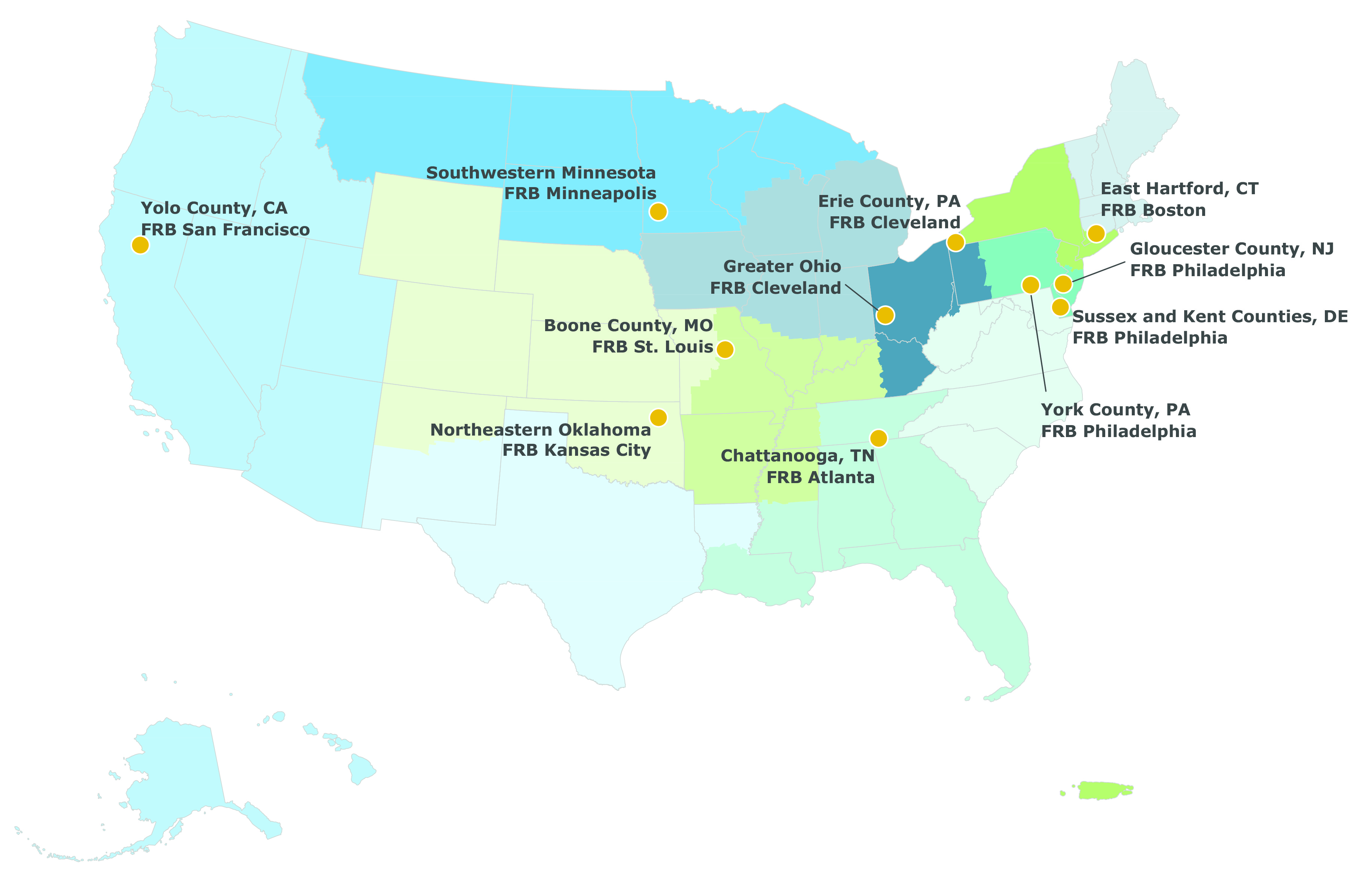The 2022 ROC Cohort Program focuses on an equitable workforce recovery. During the yearlong program, 11 communities from 10 states across the country will engage in equity and workforce trainings, peer learning, and personalized coaching and advising, leading to the development of local workforce equity plans. The program will help them apply equity solutions to strengthen regional economies and foster better economic outcomes. This year’s partners include the Federal Reserve Banks of Boston, Cleveland, Atlanta, St. Louis, Minneapolis, Kansas City, and San Francisco.
Meet this year's participating communities
The 2022 cohorts represent communities from eight reserve bank regions.

